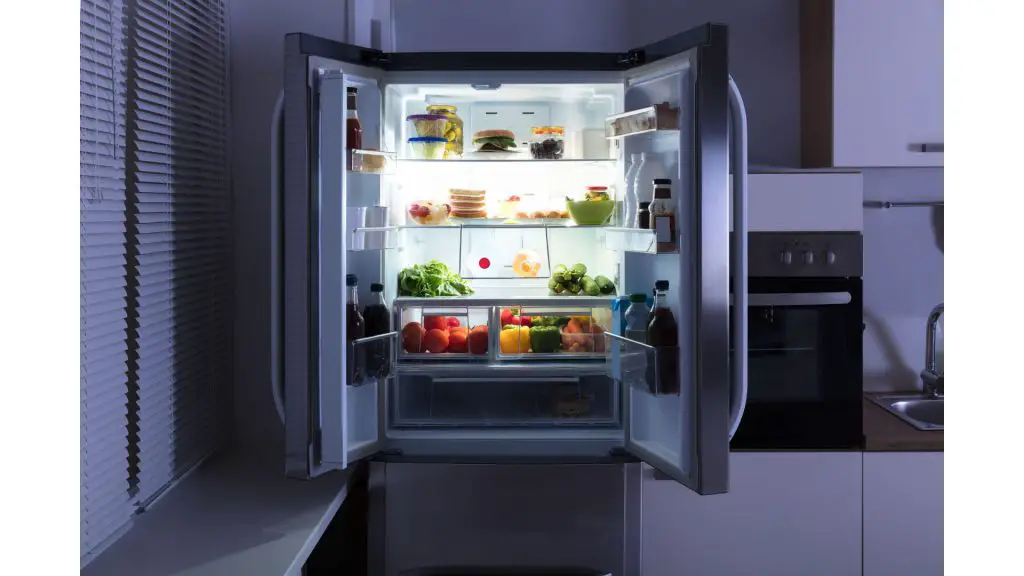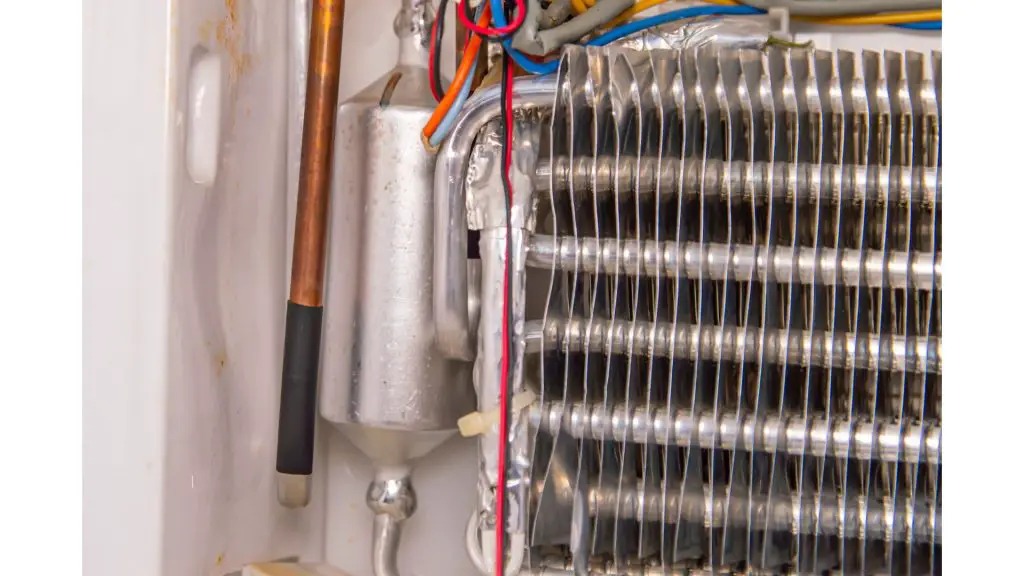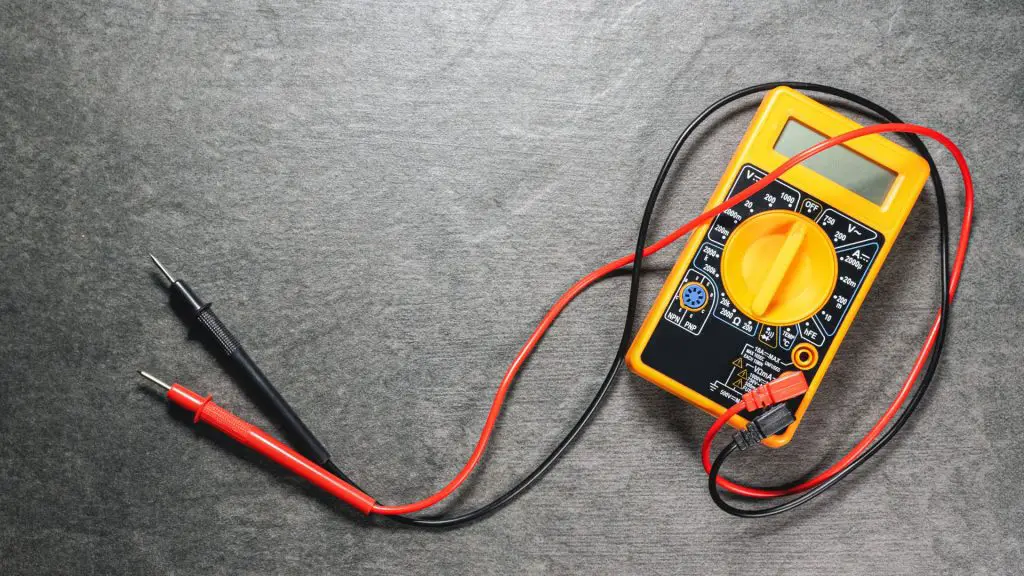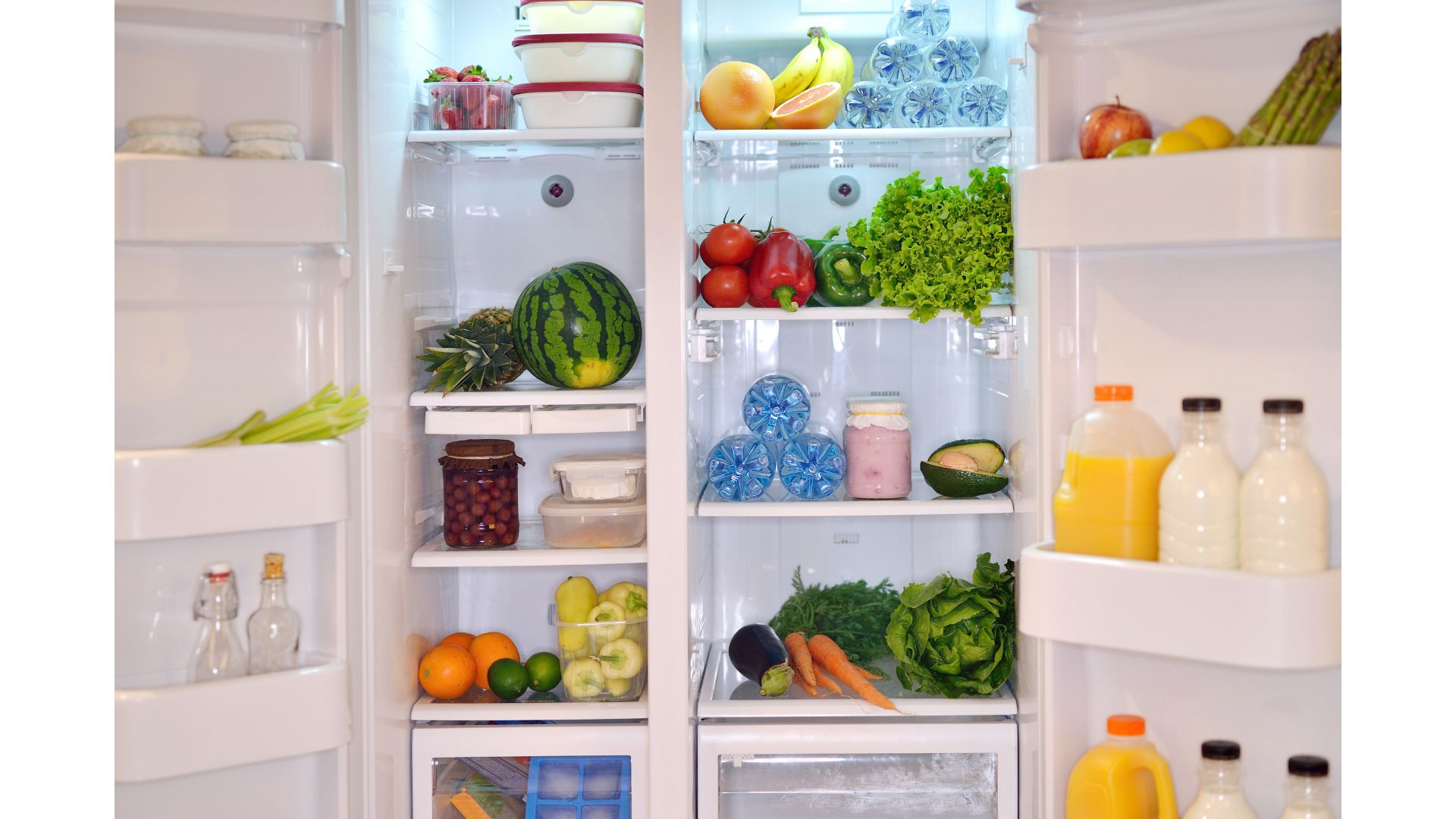You shouldn’t panic over a Hisense fridge light that won’t work. Keep the following in mind:
1). How Does A Fridge Light Work?
The fridge light works with a small lever or button in the door. Closing the door depresses the lever. This interrupts the circuit and turns the bulb off. Opening the door does the opposite. It completes the circuit, turning the bulb on.
2). What Kind of Bulb Do Hisense Fridges Use?
According to the spruce, refrigerators use a conventional 120V bulb, usually 25 or 40 watts. Don’t expect a special bulb that only works with refrigerators. These are ordinary bulbs. Therefore, you should diagnose them the same way you would the bulb hanging from the ceiling.
3). Does A Dead Light Affect The Hisense Fridge’s Operations?
This is the reason why people panic when their refrigerator’s light stops working. They expect the light to turn on when they open the door. Therefore, they automatically assume that the Hisense fridge has stopped working when the light stays off.
A bulb doesn’t influence the fridge’s functions. The appliance will continue to run regardless of whether the light is on or off unless something more serious has gone wrong.
You can test this theory by checking the temperature. Has it risen in the hours since the bulb stopped working? You can also turn up the thermostat. The appliance will vibrate slightly as the compressor starts, proving your fridge is working.
But this is not an excuse to ignore the light. You need it to take things from the fridge in a dark room. A Hisense fridge light can fail for the following reasons:
1). Failed Switch
As you now know, the light turns on and off when you open or close a door because of the plunger switch. The switch completes the circuit and turns the light on when you open the door. Naturally, the light won’t work if the switch fails.
You can test this theory by opening the door and depressing the switch with your finger. If the light stays on (instead of turning off), the switch has a defect. You can’t perform this test if the light has already stopped working.
Instead, you should perform an inspection. Is the switch stuck? Does it have debris? Has it developed a permanent defect, or can you fix it? A technician is better placed to answer this question after carefully inspecting the switch.
2). Damaged Bulb

Because fridge lights are similar to traditional bulbs, they can fail. Inspect the bulb. What do you see? Is the filament broken? Do you see dark areas? If you can’t see anything, shake the bulb.
If you hear rattling, the filament is damaged. Don’t stop here. Check whether the bulb is loose in the socket. You can also remove the bulb to look inside the socket. Do you see dirt and debris? Are the contacts broken? Are there burn marks?
Use the same troubleshooting tools and steps you typically apply to a traditional bulb. You don’t need professional assistance to diagnose a faulty light.
3). Loose Wiring

The fridge needs secure wiring to transmit electricity to the light. That wiring can fail. Search for loose connections. This only applies to the wires you can see and easily access. Wiggle them. If the light flickers, you have loose connections.
Don’t take the Hisense fridge apart in an effort to troubleshoot all the connections. Fridges are too dangerous for a layperson to disassemble. In fact, call an expert if you see singed, torn, or damaged wiring.
Damage exposes the conductors, which, in turn, leads to arcing in the long run. Arcing can start a fire.
4). Defective Circuit Board
Laypeople ignore the circuit board because they don’t understand how it can influence the light. They don’t realize that a circuit board runs everything, including the light. The more sophisticated the appliance, the more dependent it is on the circuit board.
Therefore, a defective circuit board can interfere with the operations of the light. If you’ve ruled out all other potential culprits, including the bulb, wiring, switch, and sockets, the board is the only other viable suspect.
Troubleshooting Steps To Fix A Hisense Fridge Light That Is Not Working
It can take you as little as 30 minutes to diagnose and fix a light that doesn’t work, especially if you follow these steps:
1). Test The Bulb.
According to House Keen, a Hisense fridge can last twenty years. However, the bulb may fail after a few years. Bulbs tend to burn out after reaching the end of their lifespans. If you hate relying on visual clues (such as a broken filament), test the bulb with a multimeter.

Place the first probe on the bulb’s bottom and the second on the threading. If the bulb seems okay, check its connection to the socket. Make sure the socket has a tight grip on the bulb.
2). Test The Socket
Speaking of the socket, remove the bulb and look inside the socket. If you see dirt and debris, use a warm, damp cloth to clean the contacts. If the terminals are discolored or clearly damaged by heat, replace the socket. The socket cannot create a secure connection to the light if the terminals are damaged.
3). Test The Switch’s Functions
Open the door and test the switch’s functions. Does it depress when you press it? Does it pop back out? If the switch is stuck because of debris, you can clean the component with a cloth and warm water.
If the switch is worn out, pry it out with a screwdriver, disconnect the wires, and install a replacement. Like the bulb, use a multimeter to confirm that the Hisense fridge switch is damaged.
The procedure Parts Select has detailed involves setting the multimeter to the Rx1 setting and touching the leads to the switch’s terminals. The readings will shift from infinity to zero. If you press the switch while maintaining the connection between the multimeter and the switch’s terminals, the readings will turn back to infinity.
If you get the wrong readings, replace the switch. You must remove the switch to test it.
4). Test The Power Supply
The light won’t work unless the fridge has a reliable power supply. Troubleshooting the power supply involves the following:
- Inspect the fridge’s plug. Make sure it is firm in the wall outlet.
- Inspect the power cord. Is it frayed or damaged? Replace it.
- Has the breaker tripped? Don’t just reset it. Find out why it tripped. Maybe the fridge is too powerful for the circuit. Or perhaps you have too many heavy-duty appliances on the same circuit. Inspect the breaker for damage and replace it where necessary.
- Inspect the outlet. Connect the fridge to a second outlet to determine whether the fault lies with the first outlet or the Hisense appliance.
- Reset a tripped GFCI.
- Search for loose connections and tighten them.
- Inspect the wiring. Replace damaged wires. Don’t just patch the holes with electrical tape.
An unreliable power supply won’t stop at killing the light. It will disrupt the Hisense fridge’s functions.

